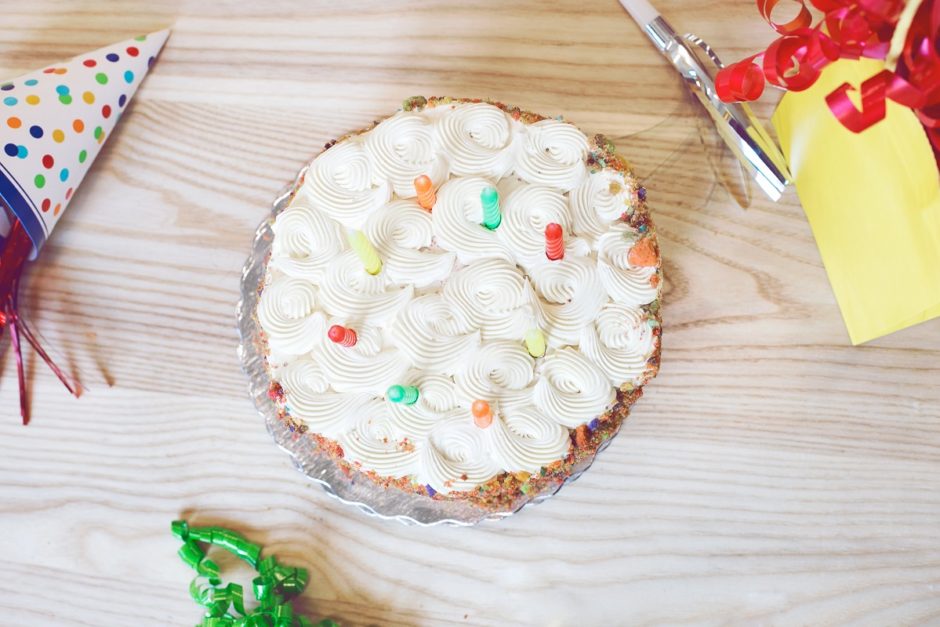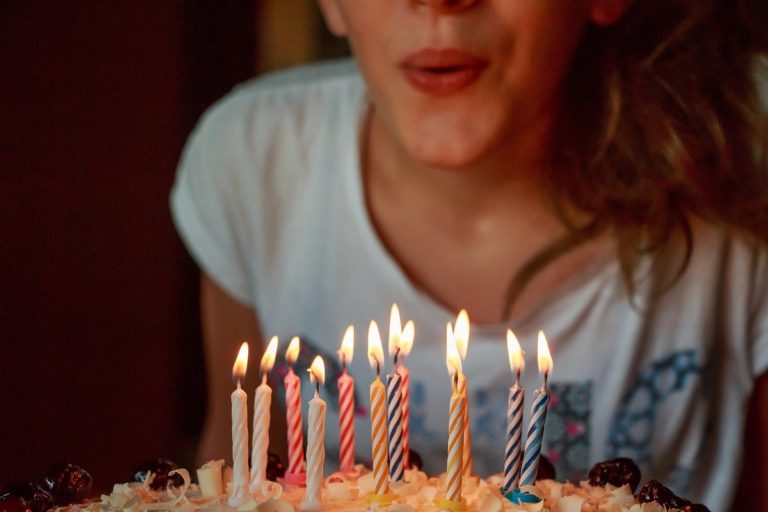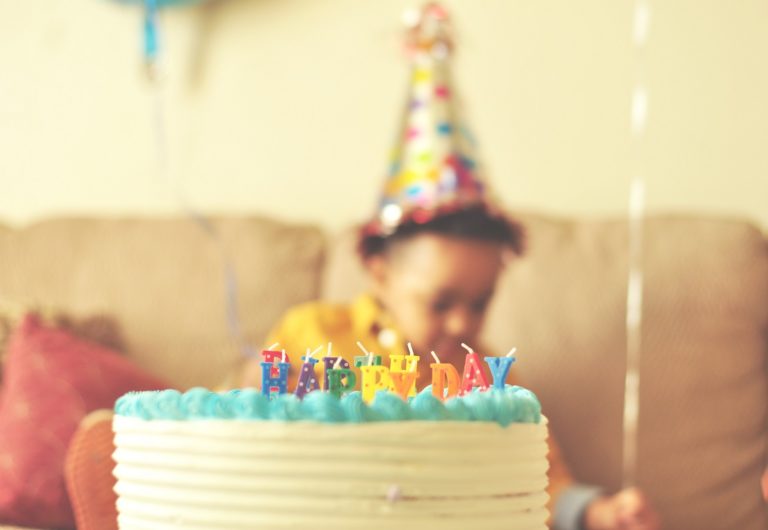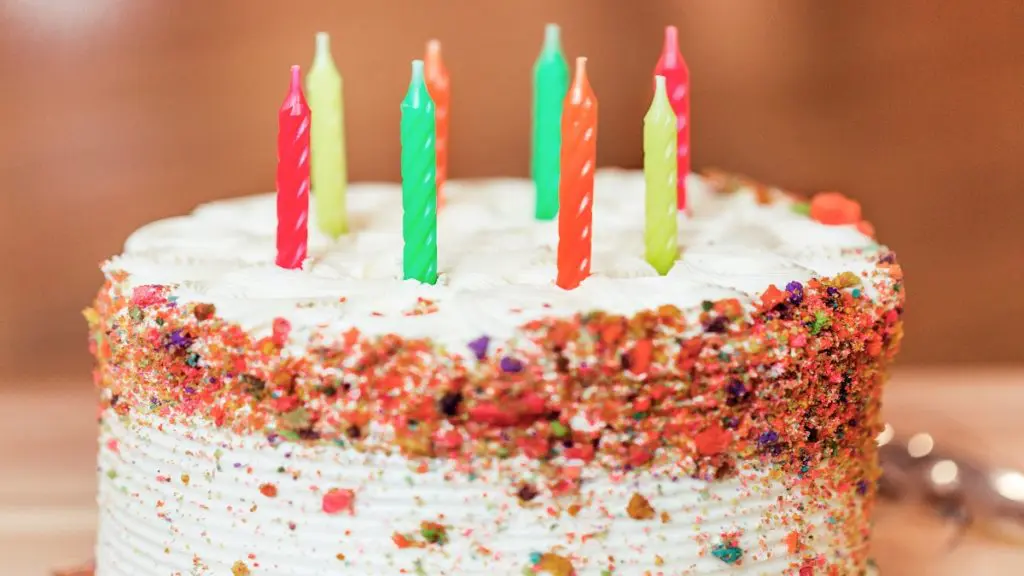“Why We Celebrate” looks at holidays from all over the world and explains their origins, the meaning behind them, and the reasons we observe them.
Everybody looks forward to the moment during a birthday party when the honored guest makes a wish and blows out the candles on the cake. But have you ever wondered why we have birthday cakes and why we started making birthday wishes in the first place?
You might be surprised to learn that the origins of many of our birthday traditions can be traced to ancient civilizations.
The birthday cake
Historians credit the Ancient Greeks with starting the birthday cake tradition, according to Alysa Leven in her book, Cake: A Slice of History.

As a way to honor the birthday of Artemis, the goddess of the moon, the Greeks baked moon-shaped cakes and decorated them with candles to make them glow like the moon in the night sky, says Alysa. Offerings to the gods were a common custom in Ancient Greece, and Artemis was one of the most widely honored of the ancient Greek deities.
The Greeks also believed the smoke of the candles would rise to the heavens, where Artemis, the daughter of Zeus, lived among other gods.
The Ancient Romans adopted and expanded this tradition, often serving cakes to honor the birthdays of government leaders and other influential citizens. The typical Roman birthday cake was flat and circular in shape, made with flour, nuts, and sweetened with honey.
Over the centuries, cakes became part of birthday celebrations of people other than gods and leaders, but the expense of the ingredients made them more commonplace in wealthy households for many centuries.
In her book, Alysa writes that by the 14th century, cakes began looking and tasting more like what we think of when we picture a modern birthday cake. Then, in the 15th century, German bakeries began to sell one-layer cakes for customers’ birthdays.
Birthday traditions — whether you are rich or poor or in between — are about doing something for your child. Kids just want your love and attention.
Candice Edmund, Tealightful Parties
As part of the German Kinderfeste, which dates back to the Middle Ages, children (“kinder” in German) were honored with a cake topped with lighted candles on the morning of their birthday. In an interesting switch from what we do today, the candles were kept burning throughout the day until the cake was eaten after the evening meal.
According to the Extraordinary Origin of Everyday Things, a book by Charles Panati, the number of candles on a Kinderfeste cake equaled the child’s age plus an extra one representing the “light of life.”
We have German immigrants to thank for bringing this custom to the New World in the 18th century. Today, we still follow this custom, often calling that additional candle “one to grow on” or “one for good luck.”
The birthday wish
Germans also gave us the tradition of making a wish as we blow out our birthday candles. According to Kinderfeste tradition, a wish would come true if a child blew out all the candles in one breath — and kept the wish secret.

The Folk-Lore Journal, published in 1883 in Great Britain, indicates some superstitions were involved with the secret wish-making, and they found their way to other countries. A reference in the book to birthday cakes includes the following: “A birthday cake must have lighted candles arranged around it, one candle for each year of life. Before the cake is eaten, the person whose birthday it is should blow out the candles one after another.”
One of the earliest references to an American birthday child blowing out candles on a birthday cake is in the March 1909 edition of the children’s magazine, St. Nicholas. A story in the magazine describes an early 20th-century birthday cake celebration: “Three candles were stuck into the frosting of the cake and lit. Then, Bab cut a piece of cake for Ned, and Ted, and for Nursie, and then she blew out the candles and so her beautiful part was over.”
Birthday cakes today
Although the state of our world may fluctuate, birthday cakes are here to stay, according to party expert Candice Edmund. She tells us that the birthday cake ceremony — serving a birthday cake with lit candles and everybody gathering around — is the focal point of every children’s birthday party, no matter how elaborate or simple the event may be.

“It doesn’t matter what is the state of the economy or the state of the pandemic; parents always want to celebrate their kids,” says Candice. Although she had to put Tealighftul Parties, the tea party business she founded in 2004, on hold due to COVID-19, Rainbows & Wishes, the one-stop-shop party rental business she launched in 2019, has been going strong throughout the challenges of the past year.
“I think birthday traditions — whether you are rich or poor or in between — are about doing something for your child,” says Candice. “Kids just want your love and attention.”
Ann Ingalls, the author of the children’s book Birthday Traditions Around the World, says that the birthday cake is a cherished part of people’s memories from their childhood. “I was born on Thanksgiving Day,” she says. “And I had three older sisters and four younger siblings. It meant so much to me when I had my own birthday cake.”
Her most valuable piece of advice? She says although people find different ways to celebrate their birthdays, being remembered is always the most important thing.





Comments are closed.